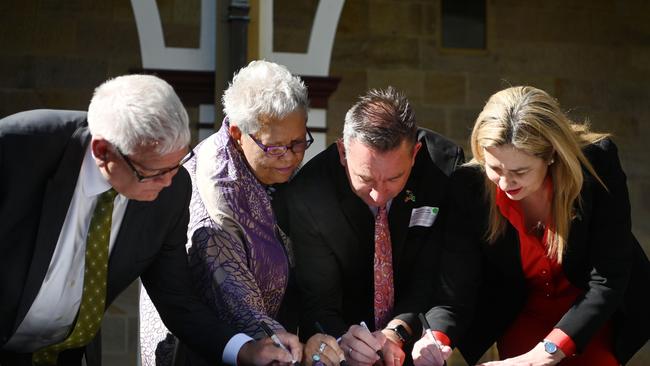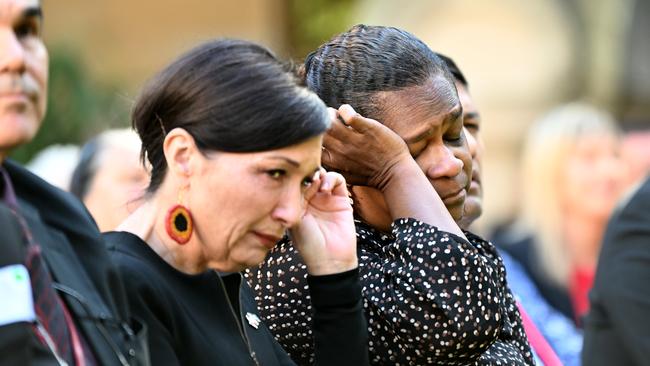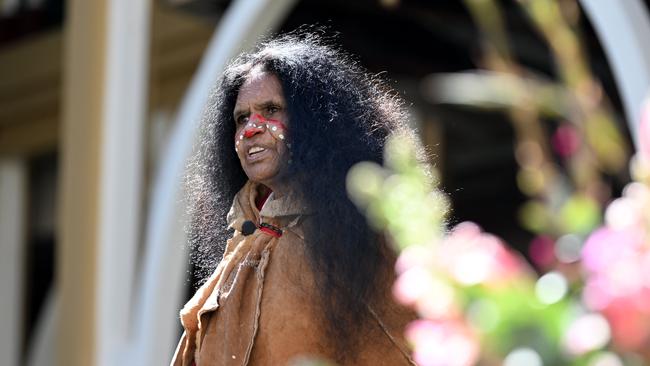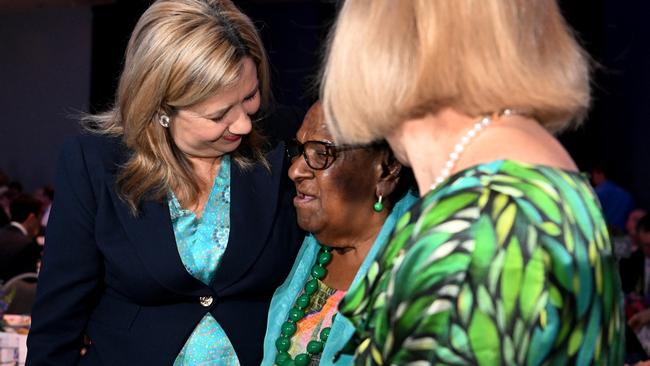Explained: How Treaty will work in Queensland
Will I lose my home? Will my suburb’s name change? What is Path to Treaty, truth-telling and the healing inquiry. We answer all your questions as Queensland confirms it will forge ahead with the landmark legislation. POLL
QLD Politics
Don't miss out on the headlines from QLD Politics. Followed categories will be added to My News.
The Queensland government is committed to forging ahead with its Path to Treaty legislation despite the crushing defeat for the Voice to parliament referendum.
The legislation was passed with bipartisan support during an extraordinary parliamentary sitting in Cairns in May.
What exactly is a treaty?
A treaty is a negotiated agreement between two or more parties, and is described by the department as a process for the Queensland government and Aboriginal and Torres Strait Islander people to come “together as equals to write our future together”.
The government says treaties are “shaped by the social, political, and historical background that exists between the groups negotiating the treaty”.
The truth-telling and healing inquiry is intended to be the first step in the process because, as the government says, any treaty must be based on truth.
Therefore the inquiry will investigate incidents or issues that were inflicted on First Nations people to form the basis of the truth behind the treaty claims.
The inquiry is expected to run for three years but work on treaties can run adjacent to the hearings once particular First Nations groups complete their truth-telling.
A treaty, by definition, is a broad term and doesn’t necessarily mean reparations.
For some Indigenous groups, a treaty could simply be recognition of a particular massacre or violence inflicted on a community during the colonisation of Australia.
For others, it could be an opportunity to have a say on specific health and social justice outcomes.
Treaties have been negotiated in a number of Commonwealth nations, including New Zealand and Canada.
But what does this mean?
The first stage of the Path to Treaty will be the truth-telling and healing inquiry.
The state government is currently finalising the structure of the inquiry with expectations committee members will be confirmed by the end of the year.

From then on, the major focus of the next three years will be the truth-telling and healing inquiry conducted by a five-member board, which will travel across the state to investigate the massacre of Indigenous people, the effect of the Stolen Generation and the impacts of colonisation on First Nations and Torres Strait Islander peoples in Queensland.
After the three years of the hearings, the results of the inquiry could lead to financial reparations, health reforms and curriculum changes by the state government as part of landmark treaty negotiations with Queensland’s First Nations groups.
Next year, the government will also set up the First Nations treaty institute with the framework for negotiating treaties.

When the laws were passed, then Aboriginal and Torres Strait Islander Partnerships Minister Craig Crawford said there was a possibility a hundred separate treaties could be negotiated, depending on how many Indigenous groups across the state come forward in the next three years.
Deals could be struck across areas like youth justice, housing, health and education, as well as a formal platform to change the names of geographic locations that are either considered insensitive or were previously known by another name for thousands of years.
Will my suburb name change without consultation?
The Queensland government says it regularly consults on updating place names and will continue to do so.
If place name changes are requested as part of a specific treaty negotiation, the usual process to undertake consultation on place name changes that already exists will be followed.

Will my taxes increase to pay treaties?
The government says the state’s $300 million Path to Treaty Fund was established in 2021 as an investment in reconciliation and healing to ensure funding certainty and remove any impact on consolidated revenue.
Returns from the fund will be used to progress Queensland’s Path to Treaty, providing a secure funding source for treaty-making activities in Queensland.
Will school curriculums change the way colonisation of Australia is taught?
The Queensland government has said information gathered from the truth-telling and healing inquiry process will help inform the community and government of the history of colonisation and ongoing impacts.
It will also inform the First Nations Treaty Institute in its work towards readiness for treaty negotiations.
Material and information gathered from the inquiry process will also be a valuable resource for Queensland schools to support the teaching of a complete history of Queensland, particularly histories from an Aboriginal and Torres Strait Islander perspective.
Could I lose land that I own as part of this Treaty?
No. The Queensland government is definitive that this will not happen.




